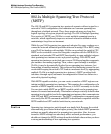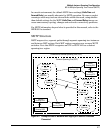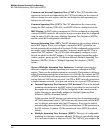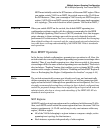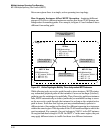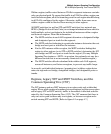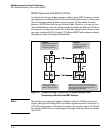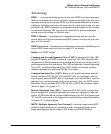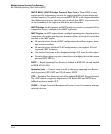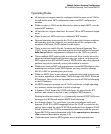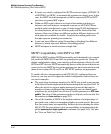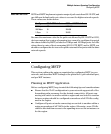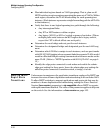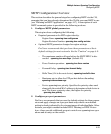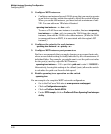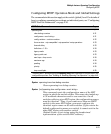
Multiple Instance Spanning-Tree Operation
802.1s Multiple Spanning Tree Protocol (MSTP)
MSTP BPDU (MSTP Bridge Protocol Data Unit): These BPDUs carry
region-specific information, such as the region identifier (region name and
revision number). If a switch receives an MSTP BPDU with a region identifier
that differs from its own, then the port on which that BPDU was received is
on the boundary of the region in which the switch resides.
MSTP Bridge: In this manual, an MSTP bridge is a switch (or another 802.1s-
compatible device) configured for MSTP operation.
MST Region: An MST region forms a multiple spanning tree domain and is a
component of a single spanning-tree domain within a network. For switches
internal to the MST region:
■ All switches have identical MST configuration identifiers (region name
and revision number).
■ All switches have identical VLAN assignments to the region’s IST and
(optional) MST instances.
■ One switch functions as the designated bridge (IST root) for the region.
■ No switch has a point-to-point connection to a bridging device that cannot
process RSTP BPDUs.
RSTP — Rapid Spanning Tree Protocol, defined in IEEE 802.1w and ratified
in IEEE 802.1D-2004.
Spanning-tree — Generic term to refer to the many spanning-tree flavors:
now deprecated STP, RSTP and VLAN-aware MSTP.
STP — Spanning Tree Protocol, part of the original IEEE 802.1D specification.
The 2004 edition completely deprecates STP. Both RSTP and MSTP have
fallback modes to handle STP.
SNMP — Simple Network Management Protocol, used to remotely manage
network devices.
4-14



